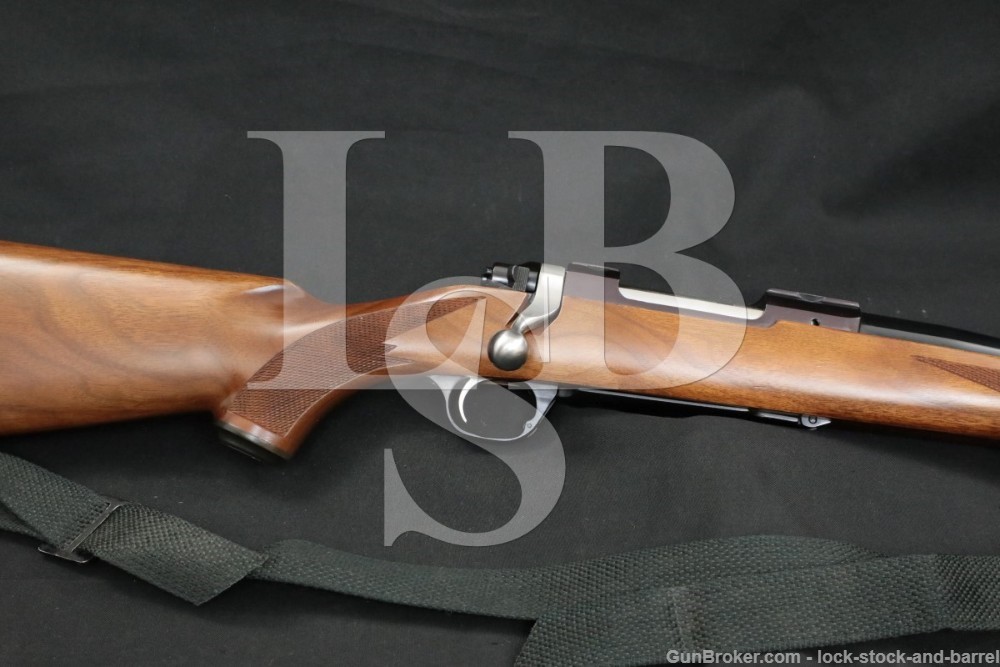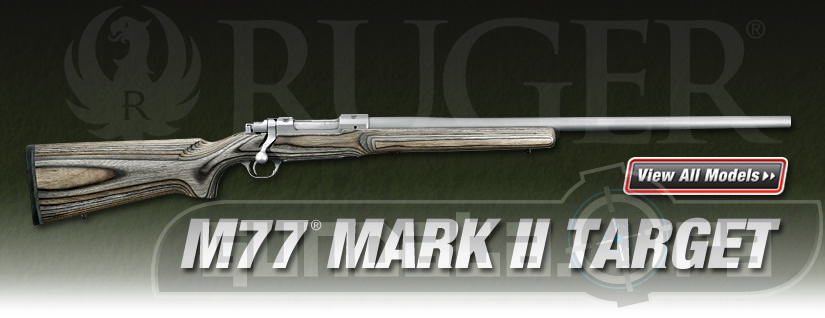

The bolt is fitted with a plunger ejector, however, and the bolt face is countersunk with approximately half the circle measuring around. Similar to the Mauser ’98, the M77 features a full-length, non-rotating claw extractor. The bolt stop is similar in shape and size to the Mauser ’98, but it is simpler, strong and features a unique buffer that serves to absorb shock. Ruger and had a unique swept S-shape that was soon changed to a more conventional design with a round bolt handle.Ī bolt guide (anti-bind lug) was dovetailed into the bolt, but that was soon changed to be machined as a part of the bolt body that, along with other design features, resulted in smooth operation. Early M77s were fitted with a flat bolt handle at the request of Mr. The bolt is a one-piece design (for greater strength) with an integrated bolt handle that results in it being nearly impossible to break off, and it also serves as a third locking lug. Remarkably, the cast Ruger bolt proved strongest of all.Įarly M77 rifles featured a nearly S-shaped, flat bolt handle (bottom) while later rifles were fitted with a more traditional swept handle and round knob. Tests were conducted on M77 bolts as well as major competing rifles using a Tinnius-Olsen dynometer with a hydraulic ram, which recorded the pressure required to shear off the locking lugs. However, testing revealed that bolts machined from bar stock featured a lengthwise grain structure that set them up with a natural fracture point when put under extreme stress, whereas cast bolts feature a rearranged grain structure that proved much stronger. Industry “experts” warned that a cast bolt would not last and that it must be machined from solid bar stock steel. For example, from the beginning it was planned to be manufactured using investment castings for the receiver and bolt. Sullivan’s experiments during the development of the M77 are revealing. Ruger also came up with the idea for a slanted front guard screw designed to pull the action down and to the rear when tightened. Also requested were a hinged floorplate and a flange to the left side of the bolt sleeve to protect shooters from gases in the unlikely event of a ruptured case. He also wanted a shotgun-style tang safety that locked the bolt when in the “on” position, which was changed on later production rifles to allow the bolt to be lifted with the safety in the “on” position for improved safety. He also requested that the M77 be closely patterned after that design with forward twin locking lugs, a 90-degree bolt lift, etc. Ruger had great admiration and respect for the Mauser ’98 action, which is reliable, durable and tough as nails. However, Sullivan is generally credited for being the actual designer. Ruger outlined his ideas of what the new rifle should be and had continual influence in its design features throughout its research and development period. 1 rifle, but his first real assignment was to develop a bolt-action rifle to compete directly with the Winchester Model 70 and Remington Model 700, with the two 7s of those models eventually becoming “77” in the M77 nomenclature. He arrived at Ruger in time to help with the final engineering touches to the No. Sullivan had worked for Gene Stoner at Armalite and played a major role in the development of the M16 rifle and other firearm designs. in 1965 by personal invitation from Bill Ruger. This story really began when Jim Sullivan joined Sturm, Ruger & Co.

Its design and appearance were refreshing to many riflemen as the initial production run quickly sold out, and over the next 22 years more than 1,000,000 rifles were produced, which is impressive by any standard. However, the Ruger bolt action was conservative and usually featured a straight-grained, American walnut stock in classic configuration with a simple, yet attractive checkering pattern.

The rifle showed up in an era when many competing rifles were gussied up with high-gloss finishes, contrasting forend caps and Monte Carlo stocks. Although its action is based on the revered Mauser ’98 design, there were several significant differences and distinct improvements, but other changes were controversial. Introduced in 1968, the Ruger M77 was designed primarily as a hunting rifle.After years of engineering, testing and obtaining patents, the Ruger M77 was formally announced in 1968.


 0 kommentar(er)
0 kommentar(er)
